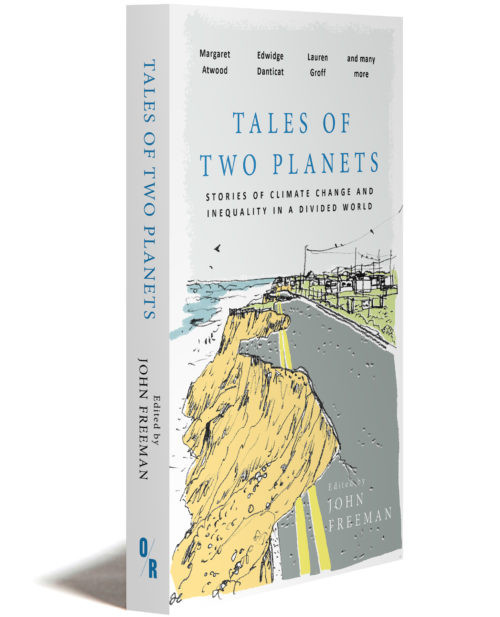Beyond Fossil Law
about the bookabout
Beyond Fossil Law: Climate, Courts, and the Fight for a Sustainable Future answers a pressing question for the future of the planet: why is it legal for companies to pump dangerous gases into the atmosphere but illegal for regular people to stop them? Reviewing the current state of “fossil law”—the rules and regulations that allow the disruption of the global climate system—the book explains how financial interest, colonial power, and outmoded legal ideas block efforts to prevent global warming. Moving from a historical account of the origins of fossil law to ongoing battles to criminalize climate activism, the book reveals how courts, prosecutors, and police enforce the dominance of the fossil fuel industry. But people are fighting back. Beyond Fossil Law tells the story of the Valve Turners, a group of climate activists who successfully stopped the flow of tar-sands oil to the United States in 2016. Their courtroom battles to justify an act of civil disobedience were a major step forward in crafting a new, democratic law of climate justice. Ted Hamilton examines similar efforts to dismantle fossil law, from the rights of nature movement in Latin America to groundbreaking lawsuits against governments in the United States and Europe. He shows how climate legal activism is closely linked to grassroots campaigns against government and industry abuse, and offers strategies for crafting a new law of climate justice.
“This is not just a page-turner legal thriller, it's a sweeping account of how the legal system enables the ongoing destruction of the planet. It provides a detailed, actionable understanding of why we find ourselves so deep in the hole, and how we might dig ourselves out.”
—Bill McKibben
About The Author / Editor
Preview
From the Introduction
In the fall of 2016, a group of climate activists from the Pacific Northwest sent a letter to President Obama urging action on the global warming crisis. This was the autumn of the Indigenous mobilization against the Dakota Access Pipeline at Standing Rock, of the Trump ascendancy, of the lowest sea ice ever recorded in the Arctic. Climate emergency met mostly with official inertia and prevarication. The activists wrote that the lack of action to address warming “raises the practical question of what a concerned citizen should do when our governments and economic systems are committed to a course of global suicide and are willing and able to bend the political system and civic discourse to their will.”
The members of the letter-writing group—Michael Foster, Leonard Higgins, Emily Johnston, Annette Klapstein, and Ken Ward—had been involved in environmental organizing for years. Their study of climate science and political change led them to believe that it was possible for society to transition away from fossil fuels and the ecological damage they cause. “It is not that we lack the traditions and values from which a practical and moral course of action might spring,” they wrote to the president. “We need only to act with thought for generations to come, respect the earth which nourishes us, cherish wild things and wild places, and value people over things, happiness over wealth, and other people over one’s self.”
The activists posted their letter online on the morning of October 11. Shortly afterward, they traveled separately to remote locations in Minnesota, North Dakota, Montana, and Washington. They had come prepared with bolt cutters and flowers, and they carried a message of support for the Water Protectors at Standing Rock.
“We have tried every avenue by which engaged citizens might advance such concerns—in this case, ecological—in public policy, and nothing has worked,” they wrote. “There is no plausible means or mechanism by which the extraction and burning of coal and tar sands oil from existing mines and fields can be halted on the timeline now required by any ordinary, legal means.”
After their friends placed warning calls to oil companies, the five activists cut padlocks and entered pipeline control sites that lay in the middle of empty fields and alongside deserted county roads. They approached valves controlling pipelines that stretched hundreds of miles in either direction. As their actions were livestreamed to the world, they turned the valves and shut the pipelines down.
in the media
Beyond Fossil Law
about the bookabout
Beyond Fossil Law: Climate, Courts, and the Fight for a Sustainable Future answers a pressing question for the future of the planet: why is it legal for companies to pump dangerous gases into the atmosphere but illegal for regular people to stop them? Reviewing the current state of “fossil law”—the rules and regulations that allow the disruption of the global climate system—the book explains how financial interest, colonial power, and outmoded legal ideas block efforts to prevent global warming. Moving from a historical account of the origins of fossil law to ongoing battles to criminalize climate activism, the book reveals how courts, prosecutors, and police enforce the dominance of the fossil fuel industry. But people are fighting back. Beyond Fossil Law tells the story of the Valve Turners, a group of climate activists who successfully stopped the flow of tar-sands oil to the United States in 2016. Their courtroom battles to justify an act of civil disobedience were a major step forward in crafting a new, democratic law of climate justice. Ted Hamilton examines similar efforts to dismantle fossil law, from the rights of nature movement in Latin America to groundbreaking lawsuits against governments in the United States and Europe. He shows how climate legal activism is closely linked to grassroots campaigns against government and industry abuse, and offers strategies for crafting a new law of climate justice.
“This is not just a page-turner legal thriller, it's a sweeping account of how the legal system enables the ongoing destruction of the planet. It provides a detailed, actionable understanding of why we find ourselves so deep in the hole, and how we might dig ourselves out.”
—Bill McKibben
About The Author / Editor
Preview
From the Introduction
In the fall of 2016, a group of climate activists from the Pacific Northwest sent a letter to President Obama urging action on the global warming crisis. This was the autumn of the Indigenous mobilization against the Dakota Access Pipeline at Standing Rock, of the Trump ascendancy, of the lowest sea ice ever recorded in the Arctic. Climate emergency met mostly with official inertia and prevarication. The activists wrote that the lack of action to address warming “raises the practical question of what a concerned citizen should do when our governments and economic systems are committed to a course of global suicide and are willing and able to bend the political system and civic discourse to their will.”
The members of the letter-writing group—Michael Foster, Leonard Higgins, Emily Johnston, Annette Klapstein, and Ken Ward—had been involved in environmental organizing for years. Their study of climate science and political change led them to believe that it was possible for society to transition away from fossil fuels and the ecological damage they cause. “It is not that we lack the traditions and values from which a practical and moral course of action might spring,” they wrote to the president. “We need only to act with thought for generations to come, respect the earth which nourishes us, cherish wild things and wild places, and value people over things, happiness over wealth, and other people over one’s self.”
The activists posted their letter online on the morning of October 11. Shortly afterward, they traveled separately to remote locations in Minnesota, North Dakota, Montana, and Washington. They had come prepared with bolt cutters and flowers, and they carried a message of support for the Water Protectors at Standing Rock.
“We have tried every avenue by which engaged citizens might advance such concerns—in this case, ecological—in public policy, and nothing has worked,” they wrote. “There is no plausible means or mechanism by which the extraction and burning of coal and tar sands oil from existing mines and fields can be halted on the timeline now required by any ordinary, legal means.”
After their friends placed warning calls to oil companies, the five activists cut padlocks and entered pipeline control sites that lay in the middle of empty fields and alongside deserted county roads. They approached valves controlling pipelines that stretched hundreds of miles in either direction. As their actions were livestreamed to the world, they turned the valves and shut the pipelines down.







